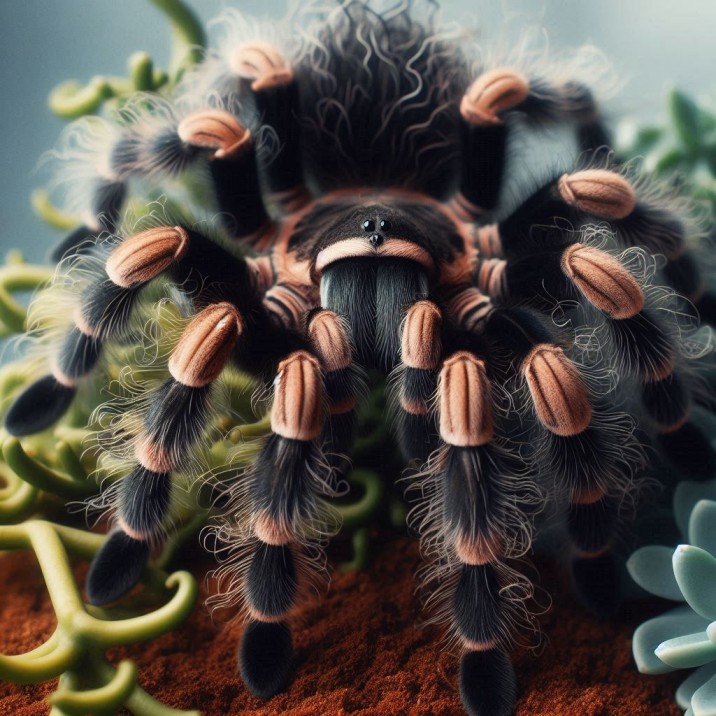Curly hair tarantulas, known for their distinctive appearance and relatively docile nature, are a popular choice among tarantula enthusiasts. But one common question many have is: How long curly hair tarantula live? Understanding their lifespan can help owners provide better care and enjoy their companionship for years to come. In this article, we will delve into the lifespan of curly hair tarantulas, factors affecting their longevity, and tips to ensure they live a healthy life.
Introduction to Curly Hair Tarantulas
Table of Contents
Curly hair tarantulas, scientifically known as Tliltocatl albopilosus, are native to Central America. These tarantulas are easily recognizable by their unique, curly bristles covering their bodies. They are generally brown with a golden sheen, which makes them quite attractive. Their calm demeanor and ease of care make them ideal pets for both beginners and experienced keepers.

How long Curly Hair Tarantula live?
To answer the question “How long curly hair tarantula live” we need to understand The lifespan of curly hair tarantulas can vary significantly between males and females. On average, male curly hair tarantulas live for about 5 to 7 years, while females can live much longer, often reaching 15 to 20 years. This difference is due to the biological and reproductive differences between the sexes.
Factors Affecting the Lifespan of Curly Hair Tarantulas
Several factors can influence the lifespan of curly hair tarantulas. Here are some key aspects to consider:
1. Diet and Nutrition
A well-balanced diet is crucial for the health and longevity of curly hair tarantulas. They primarily feed on insects such as crickets, mealworms, and roaches. Ensuring that their diet is varied and rich in nutrients helps them grow and thrive. Overfeeding or underfeeding can lead to health issues and potentially shorten their lifespan.
2. Habitat and Environment
Creating an optimal living environment is essential for the well-being of curly hair tarantulas. Their enclosure should mimic their natural habitat, providing appropriate temperature, humidity, and space. Maintaining clean and suitable conditions prevents stress and health problems, contributing to a longer life.
3. Molting Process
Tarantulas, including curly hair tarantulas, undergo a molting process where they shed their exoskeleton to grow. This process is vital for their development but can be stressful. Proper care during moulting, such as ensuring a safe and humid environment, helps them successfully complete this process and continue growing.
4. Stress and Handling
Minimizing stress is crucial for the health of curly hair tarantulas. Excessive handling or disturbances can cause stress, leading to a weakened immune system and health issues. It’s important to handle them gently and infrequently, allowing them to feel secure in their environment.
Ensuring a Long and Healthy Life for Your Curly Hair Tarantula
To help your curly hair tarantula live a long and healthy life, consider the following tips:
1. Proper Housing
Provide an appropriately sized enclosure with secure ventilation. Use substrates like coconut fiber or peat moss to maintain humidity and allow burrowing.
2. Regular Feeding Schedule
Feed your tarantula a varied diet of live insects, ensuring they are gut-loaded (fed nutritious food) before being offered to the tarantula. Avoid feeding too frequently to prevent obesity.
3. Monitoring Moulting
Keep an eye on the moulting process and provide extra humidity during this time. Refrain from handling the tarantula during and immediately after moulting to avoid stress and injury.
4. Minimizing Stress
Limit handling and disturbances, and avoid sudden changes in their environment. Provide hiding spots in the enclosure to help them feel secure.
5. Regular Cleaning
Maintain a clean enclosure by removing uneaten prey and waste regularly. This helps prevent mold and mites, which can harm your tarantula.
Table of Information: How long curly hair tarantula live
| Aspect | Details |
|---|---|
| Scientific Name | Tliltocatl albopilosus |
| Common Name | Curly Hair Tarantula |
| Average Lifespan (Males) | 5 to 7 years |
| Average Lifespan (Females) | 15 to 20 years |
| Native Habitat | Central America |
| Diet | Insects (crickets, mealworms, roaches) |
| Optimal Temperature | 75-85°F (24-29°C) |
| Humidity Requirements | 65-75% |
| Moulting Frequency | Juveniles: 3-4 times a year, Adults: 1-2 times a year |
Conclusion
Curly hair tarantulas can be fascinating and long-lived pets with the right care. By understanding their lifespan and the factors that affect their longevity, you can provide the best environment and diet to ensure your tarantula thrives. Whether you are a beginner or an experienced keeper, these gentle arachnids can bring years of enjoyment and companionship.
FAQs about How long curly hair tarantula live
1. What do curly hair tarantulas eat?
Curly hair tarantulas primarily eat live insects such as crickets, mealworms, and roaches. Ensure the prey is appropriately sized and gut-loaded.
2. How often should I feed my curly hair tarantula?
Juveniles should be fed every 2-3 days, while adults can be fed once a week. Adjust feeding frequency based on the tarantula’s appetite and growth.
3. Can I handle my curly hair tarantula?
While curly hair tarantulas are generally docile, handling should be minimal to avoid stress. Gently and infrequently handling them is recommended.
4. How can I tell if my tarantula is about to moult?
Signs of impending moulting include reduced appetite, lethargy, and a darker abdomen. Provide extra humidity and avoid handling during this time.
5. What is the ideal temperature for curly hair tarantulas?
The ideal temperature range for curly hair tarantulas is 75-85°F (24-29°C). Use a heat source if necessary to maintain this range.

